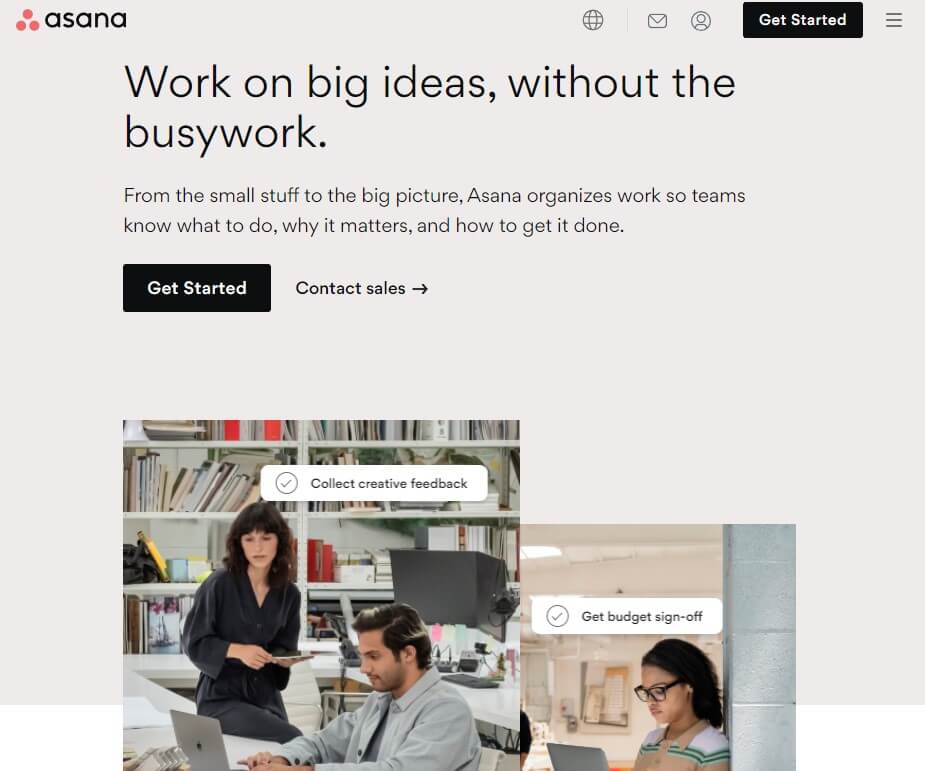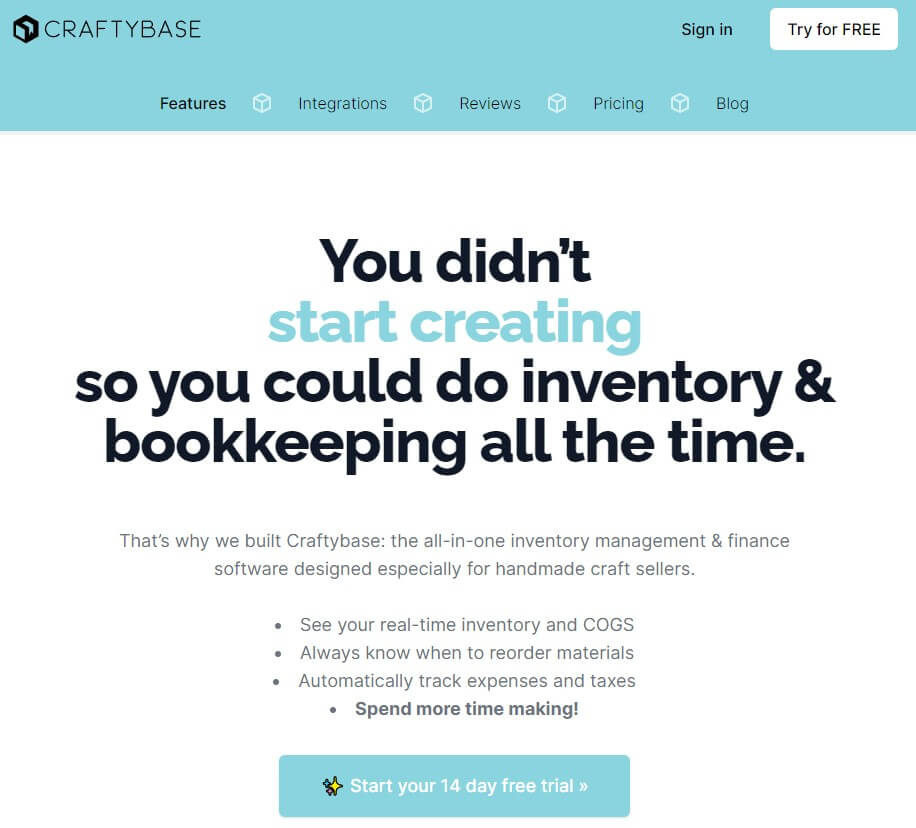5 Must Have Tools for Craft Sellers
In this article, we show you 5 tools you need to be using as a successful handmade craft seller.
Creating handmade craft goods is an exacting process that requires a lot of skill and attention, and it’s of course the most important aspect of your business. But there are other areas that also require attention and investment if you want to make a living off of your craft.
We’re talking about organization, inventory management, accounting, marketing, and more.
In this post, we’ll review the software tools that will have the biggest impact on how you run your business.
Ready to take your Etsy store to the next level?
Discover how Craftybase is the Etsy inventory software you've been missing out on: track raw materials and product stock, COGS, pricing and much more. It's your new production central.
1. Project management tool
Even a one-person craft operation must stay organized, and a project management tool is the best way of accomplishing this.
Most project management tools have a wide combination of features that can help you run your business in different ways.
For example, you can use the PM tool’s checklist to track important to-do’s. These checklists can generally be sorted by category and urgency to help you better prioritize your activities for the week.

You can also apply dates to these tasks and view them in calendar format so that you have a better sense of when each task needs to be done.
The more advanced project management software tools even allow you to link tasks together via “dependency” so that the status of one affects the status of the other tasks down the chain. If you need to buy fabric before you can make more product, for example, you can link them so that a delay in obtaining raw materials will push out your production date accordingly.
Most project management software products have a fee, but Asana and Trello offer free versions of their product for individuals or solo operators.
2. Design tool
If you’re like most handmade craft sellers, you don’t have a graphic designer on your team; but with tools like Canva, you don’t have to.

Canva is a cloud-based graphic design platform that allows you to design anything your business might need: packaging, email headers, website graphics, Instagram panels, and more. It comes with its own collection of stock photos, and has hundreds of templates that you can use to start your design projects.
Adopting the platform is made easier by the copious amounts of official and unofficial learning resources available online. For instance, check out this complete canva tutorial on YouTube by Natalia Kalinska.
3. Inventory management platform
No matter how skilled or organized you are, it can be difficult to keep track of all your raw materials, product stocks, and orders if you don’t have some kind of system or tool. Lack of information in this area increases your risk of running short at a critical moment, leaving you unable to fill an order.

That’s where an inventory management platform can really make a difference for your business. You can keep accurate and up-to-the-minute counts of all of your raw materials and components, as well as counts of all of your finished products. Tools like Craftybase can even differentiate between products that are available for sale and those that are already committed to existing orders.
Craftybase also allows you to assign costs to individual components and use that to calculate the total material cost of each of your products, so that you can price your goods more accurately and get better visibility into your profit margins. If you want to make more per item, you’ll be able to determine whether raising your prices or reducing your expenses is the right choice.
4. Email marketing platform
You have just created a new batch of amazing products, and now need to tell your best customers. How do you let them know?
You could post it on Instagram, but that would be the equivalent of shouting into the wind. There’s no guarantee that your best customers will see that post, and less likelihood that someone will go to your online store and buy. Although there are some Facebook tips we recommend.

Email, however, is direct and highly targeted. Everyone (literally everyone) has an email address, and despite what you may have heard from marketing “gurus,” email is still a highly effective way for merchants and store owners to engage with their customers.
With emails, you can highlight your hottest new items or advertise a seasonal sale. You can tailor the distribution list to only send emails to customers who’d be most interested in a specific product or offer.
Best of all, you can use email to increase your direct sales–no going through marketplace platforms.
If you’re interested in trying out an email solution, sites like Mailchimp, Hubspot, and SendInBlue offer free basic accounts.
5. Lead capture
An email marketing platform is only as good as the email addresses in your contact list.
How do you get email addresses? There are various ways you can capture leads, each with their own pros and cons.
First off, you can incorporate a simple lead capture field right on your website. Website builders like Wix already come with such widgets as part of their development interface. Simply add the field to your form and encourage users to subscribe to your mailing list.
You can also use a form-building tool like Typeform or SurveyMonkey to generate longer survey forms. These forms are useful for capturing feedback, or for signing up for a downloadable asset like an ebook or pdf.
Lastly, you can create a landing page, which is basically like a miniature website that promotes one particular offer or product. These can be created with landing page builders like Unbounce or Instapage.
Note: Before you send_any_ email, read up on the anti-spam laws that affect your region. CAN-SPAM, GDPR, and CASL are all privacy and data-protection laws that govern how businesses collect and use customer information. Read and understand the laws for your area so that you can stay compliant and safe from potential litigation.
Conclusion
You’re already a great artist or crafter but with the tools above you can also grow to be a great entrepreneur. Each tool we’ve listed expands your capabilities as a business person and strengthens your operation.
The beauty of these tools is that they allow you to operate at your comfort level, whether you want to stay an intimate crafting business or eventually scale up to a small shop.
